The Ultimate Melon Guide: More Than Just a Summer Snack
I’ve spent years in the food world, from high-energy kitchens to teaching the science behind what we eat. And if there’s one thing I’ve learned, it’s that the simplest foods are often the most fascinating. Take melons, for example. We tend to think of them as just a sweet, watery treat for a hot day, right? But when you really look at one, you’re seeing a powerhouse of nutrition designed by nature.
In this article
- First Things First: Know Your Melons
- It’s Not Just Water, It’s Smart Hydration
- Good for Your Heart and Blood Flow
- For Healthy Vision, Glowing Skin, and a Strong Immune System
- A Smart Tool for Digestion and Weight Management
- How to Pick, Store, and Prep Melons Like a Pro
- Bonus Tips: Get Creative and Reduce Waste
- Galerie d’inspiration
That amazing sweet smell from a ripe cantaloupe? That’s not just a nice aroma; it’s a signal that its nutritional value is at its peak. The satisfying, heavy feel of a perfect watermelon tells a story of its incredible water content and journey from the field. This guide isn’t just a boring list of benefits. I want to pull back the curtain and show you why melons are so good for you, from their hydrating power to how they support your heart. My goal is to help you walk through the produce aisle and pick a melon with the confidence of a pro.
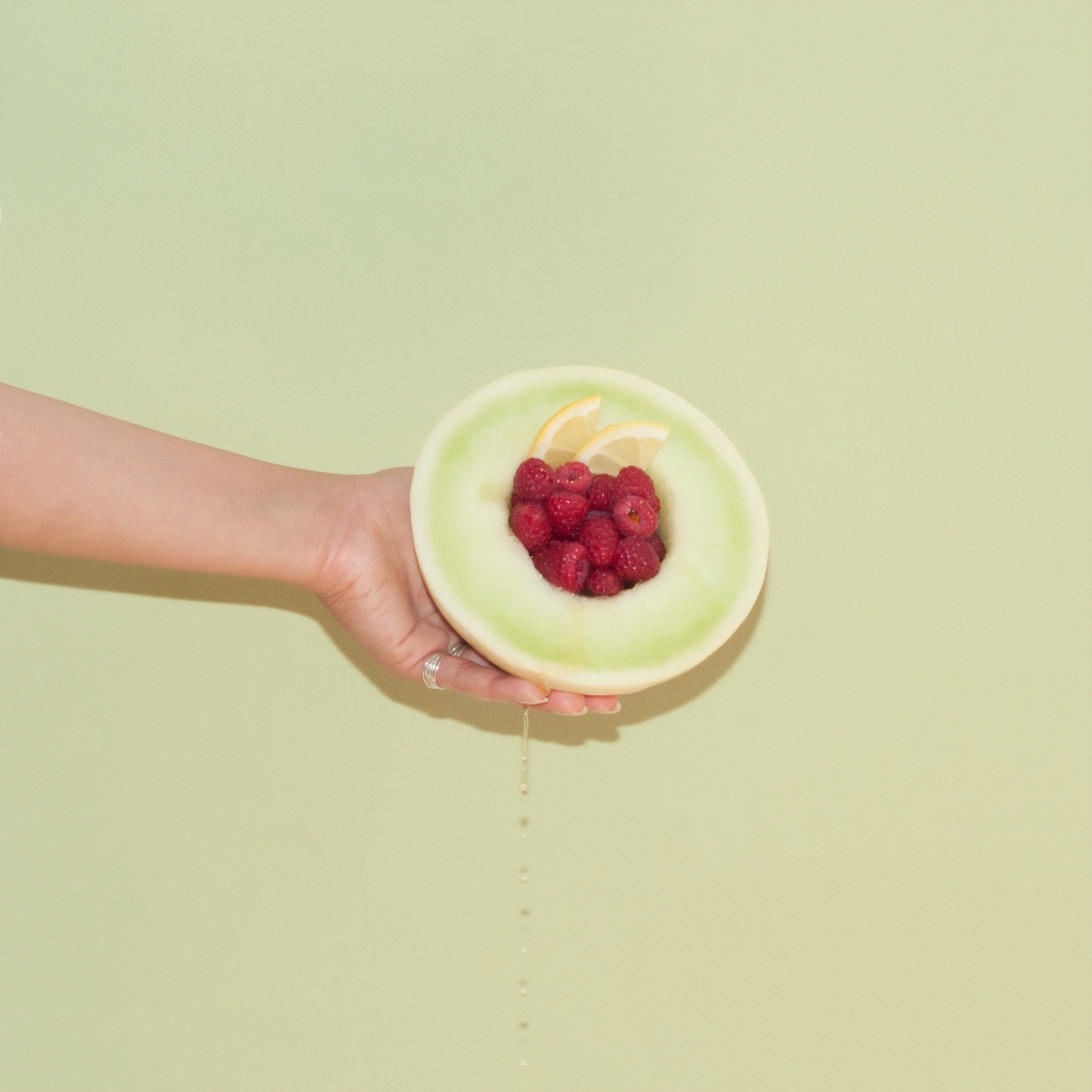
First Things First: Know Your Melons
Before we get into the good stuff, let’s quickly cover what we’re talking about. Most melons we love belong to the same plant family as cucumbers, squash, and pumpkins. This family connection is why they share some nutritional traits, but they each have their own unique superpowers.
Watermelons
This is the iconic summer fruit, no doubt about it. That vibrant red or pink flesh gets its color from a potent antioxidant called lycopene. Watermelons are also the best natural source of an amino acid called citrulline, which is incredible for circulation. We’ll get more into that later. You can find them in the classic giant striped form or as smaller, seedless personal-sized melons. Oh, and by the way, you can also find them with yellow or orange flesh, each offering a slightly different flavor profile.
Muskmelons (The Aromatic Ones)
This group is known for that distinct, sweet, and musky scent they give off when they’re ripe. It includes a couple of huge favorites:
– Cantaloupes: In North America, this is the one with the web-like, netted skin and bright orange flesh. These guys are the undisputed champions of beta-carotene, which our bodies turn into Vitamin A.
– Honeydew: With its smooth, pale rind and light green flesh, honeydew is famous for its high Vitamin C content and a more subtle, clean sweetness. A good one will feel slightly tacky or waxy to the touch, not perfectly smooth.
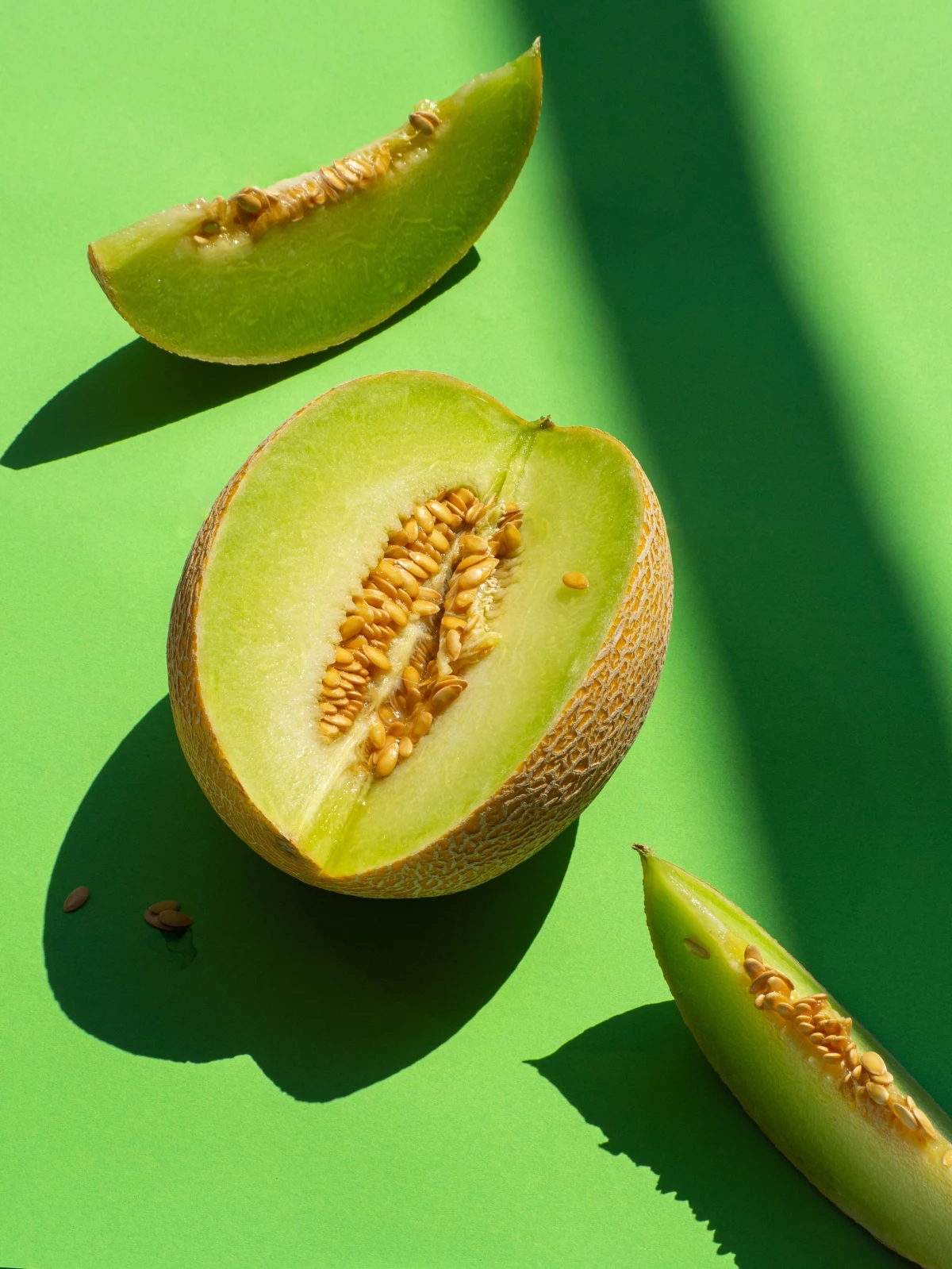
A Quick Cheat Sheet for the Grocery Store
So, how do you choose? It’s pretty simple:
- For post-workout recovery and circulation: Grab a Watermelon.
- For a huge boost of Vitamin A (think skin and eyes): Go for a deep-orange Cantaloupe.
- For a Vitamin C powerhouse with a milder flavor: A good Honeydew is your best bet.
It’s Not Just Water, It’s Smart Hydration
Everyone knows melons are full of water—most are over 90% water by weight. But here’s the thing: true, effective hydration is about more than just H₂O. Your body needs electrolytes to actually use that water correctly, and this is where melons are brilliant.
They are an excellent source of potassium, the master electrolyte that works with sodium to balance fluids inside and outside your cells. When you sweat, you lose both water and potassium. A slice of cantaloupe not only gives you the fluids back but also replenishes that key electrolyte, making it way more effective than plain water. In fact, just one wedge of cantaloupe can have over 300mg of potassium.

Ditch the Sugary Sports Drinks
I often tell athletes to skip the pricey, artificial sports drinks. Instead, I recommend chilled watermelon after a workout. It provides fluids, natural sugars to restore muscle energy, and potassium to help prevent cramps. It’s nature’s perfect recovery formula.
My Go-To Natural Sports Drink: This is ridiculously easy. In a blender, combine 2 cups of chilled, cubed watermelon, the juice of half a lime, and a tiny pinch (about 1/8 teaspoon) of sea salt. Blend until smooth. That’s it! It’s clean, effective, and delicious.
Good for Your Heart and Blood Flow
Melons contain several compounds that directly support your cardiovascular system. L-citrulline, found in abundance in watermelon, is a big one. Your body converts it into L-arginine, which then helps produce something called nitric oxide. Nitric oxide is a vasodilator, meaning it relaxes and widens your blood vessels. This allows blood to flow more easily, which can lower blood pressure and improve circulation all over your body.
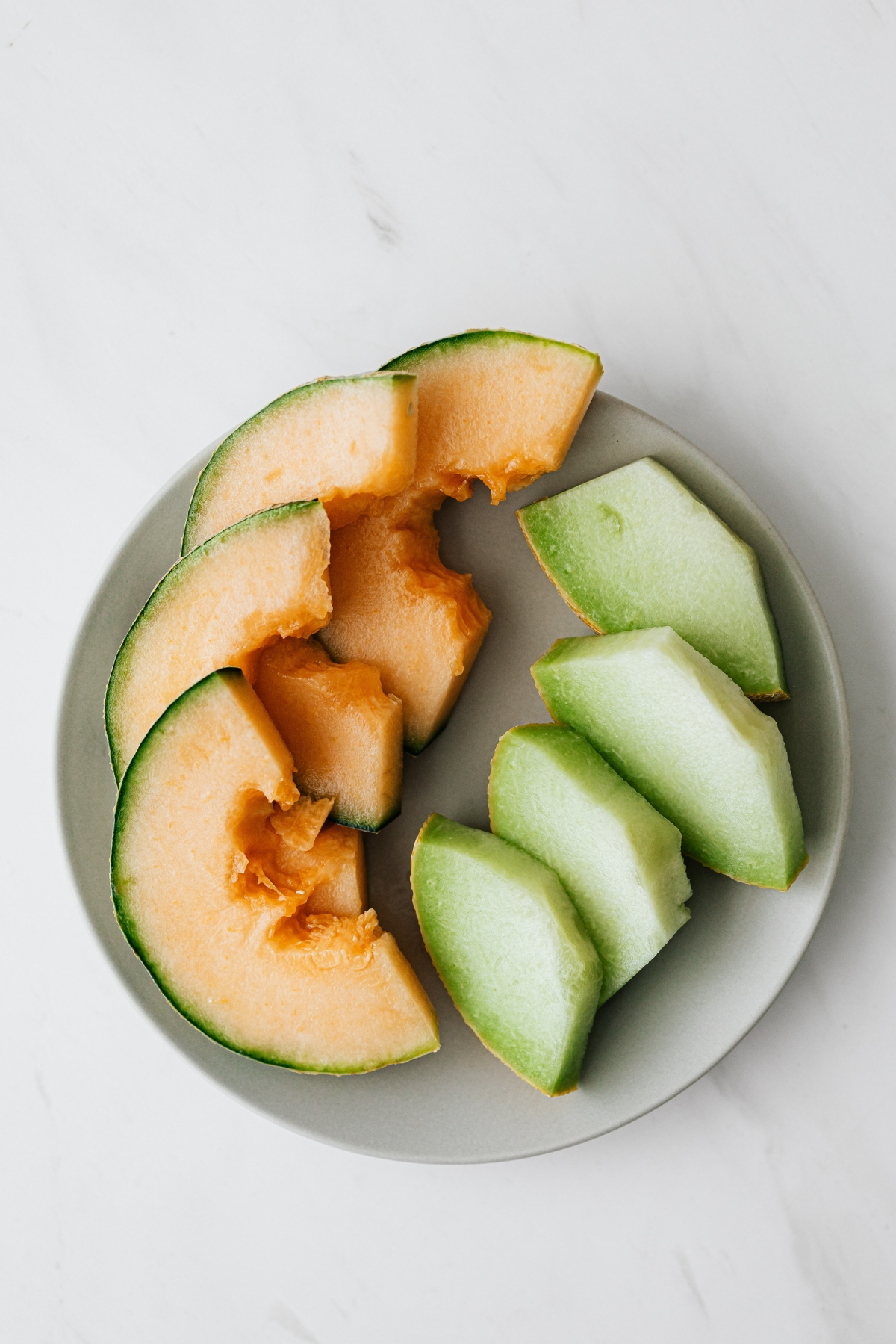
Watermelon’s red color comes from lycopene, a powerful antioxidant that helps prevent the oxidation of LDL (the “bad”) cholesterol. Think of it as helping to keep your arteries flexible and clear. And let’s not forget potassium again! By helping your body flush out excess sodium, it’s another way melons contribute to healthy blood pressure.
Heads up! While melons are a fantastic part of a heart-healthy diet, they aren’t a replacement for medication. If you have a heart condition, high blood pressure, or kidney issues, always stick with your doctor’s advice, as they may want you to monitor your potassium intake.
For Healthy Vision, Glowing Skin, and a Strong Immune System
The bright colors of melons are a dead giveaway that they’re packed with protective compounds. Cantaloupe’s deep orange flesh is loaded with beta-carotene. Your body converts this into Vitamin A, which is absolutely essential for eye health. Just one cup of cubed cantaloupe can provide over 100% of your daily recommended Vitamin A!
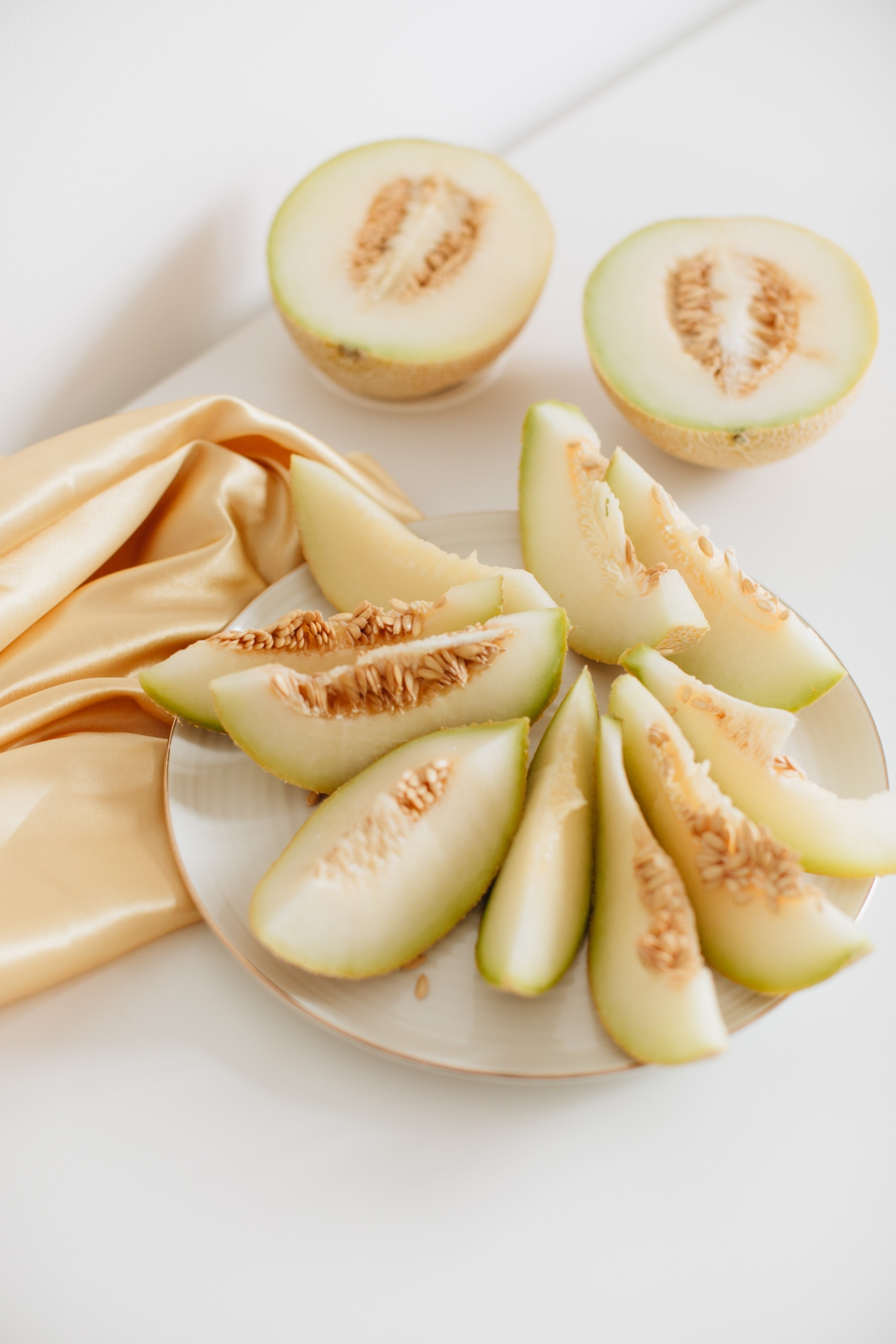
Both cantaloupe and honeydew are also packed with Vitamin C. A single cup of cantaloupe delivers nearly all the Vitamin C you need for the day. This vitamin is crucial for building collagen, the protein that keeps your skin firm and helps it repair itself. It also fires up your immune system by encouraging the production of white blood cells. A quick tip: Vitamin C is sensitive to light and air, so for the best nutritional punch, eat melon soon after you cut it or store it in an airtight container in the fridge.
A Smart Tool for Digestion and Weight Management
If you’re trying to manage your weight, melons can be your best friend. They are what we call a “low energy density” food—they’re high in volume (thanks to water and fiber) but low in calories. A cup of watermelon has only about 46 calories, while a cup of cantaloupe has around 60. This means you can eat a satisfying amount that fills you up without overdoing it on calories.
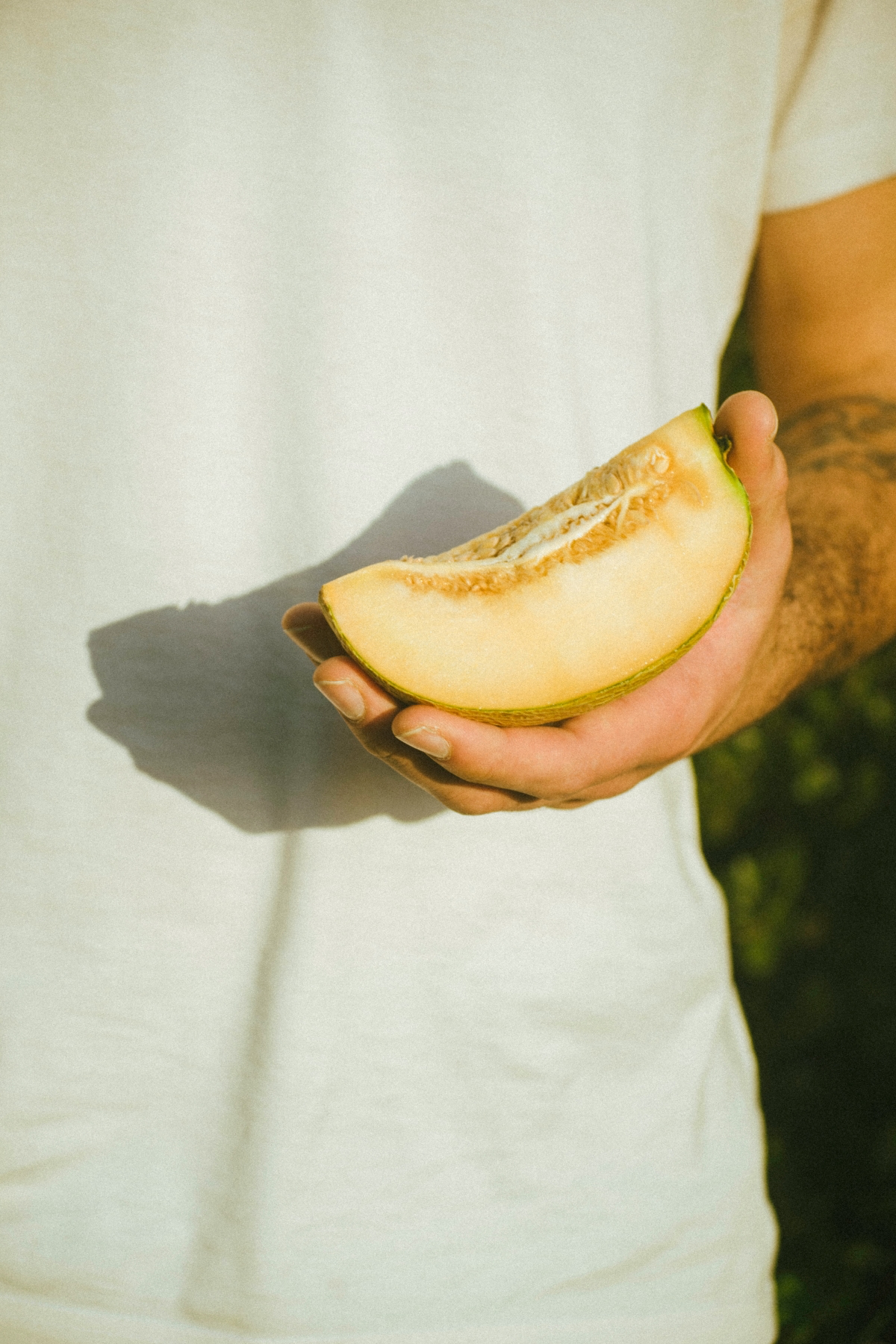
Some people get nervous about the sugar in watermelon. It’s true that it has a glycemic index (GI) of around 76, which seems high. But the GI can be misleading. A more useful number is the glycemic load (GL), which accounts for the actual amount of carbs in a serving. Because watermelon is mostly water, a standard serving has a GL of only 5, which is super low! For most people, its effect on blood sugar is minimal.
How to Pick, Store, and Prep Melons Like a Pro
This is where the kitchen experience really comes in handy. All those benefits are lost if you bring home a dud melon or handle it unsafely.
The Selection Guide
- Watermelon: Look for a creamy, yellowish patch on one side—that’s the “field spot” where it ripened in the sun. If it’s white or green, it was picked too soon. It should also feel heavy for its size. Finally, give it a good thump. You want a deep, hollow sound, like knocking on a door. A dull thud means it’s likely mealy inside.
- Cantaloupe: Your nose is your best tool here. It should smell sweet and a little musky at the end where the stem was. The stem end should give just a little when you press on it gently.
- Honeydew: Look for a rind that is creamy white or pale yellow, not green. A ripe one will have a slightly velvety or even tacky feel, not a slick, smooth one. It should also feel heavy.
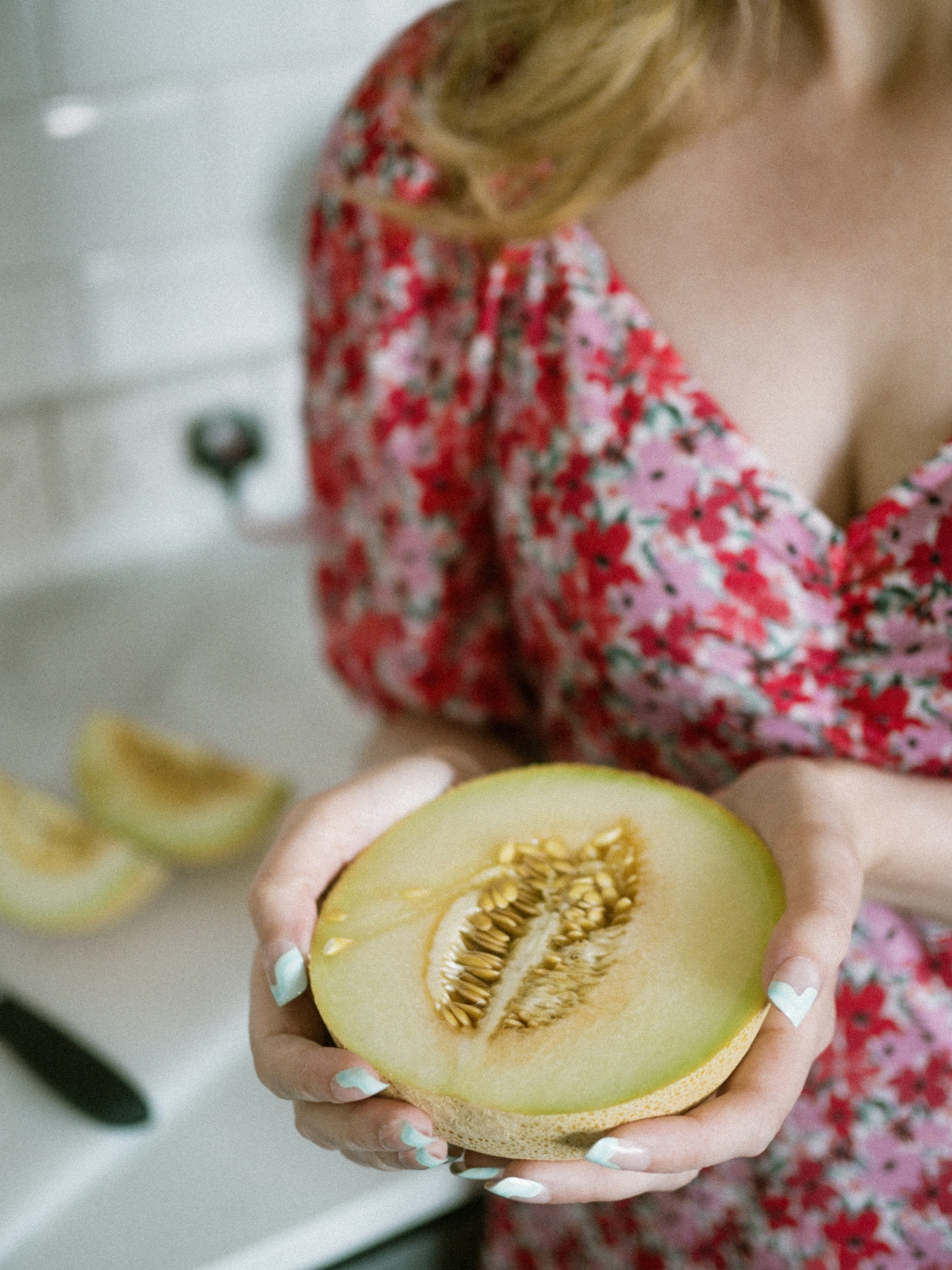
The Single Most Important Safety Step
If you remember nothing else, please remember this: WASH THE OUTSIDE OF YOUR MELON BEFORE YOU CUT IT. Melons grow on the ground, and their textured rinds can be home to nasty bacteria. When your knife slices through an unwashed rind, it drags those germs straight into the pristine flesh inside. I once saw an entire catering event get derailed, and the source was traced back to a knife slicing through an unwashed cantaloupe. Just scrub it well under cool running water with a veggie brush and pat it dry. It takes 30 seconds.
Storage and Cutting Tips
Whole Melons: An uncut watermelon or honeydew can be stored on your kitchen counter for about a week. An uncut cantaloupe, however, should go into the fridge once you bring it home to preserve its quality.
Cut Melons: Once cut, melon is perishable and must be refrigerated in an airtight container. It’ll last for about 3-4 days. For easy and safe cutting, slice a small piece off the top and bottom to create flat, stable surfaces. Stand it on one end and slice down through the middle.
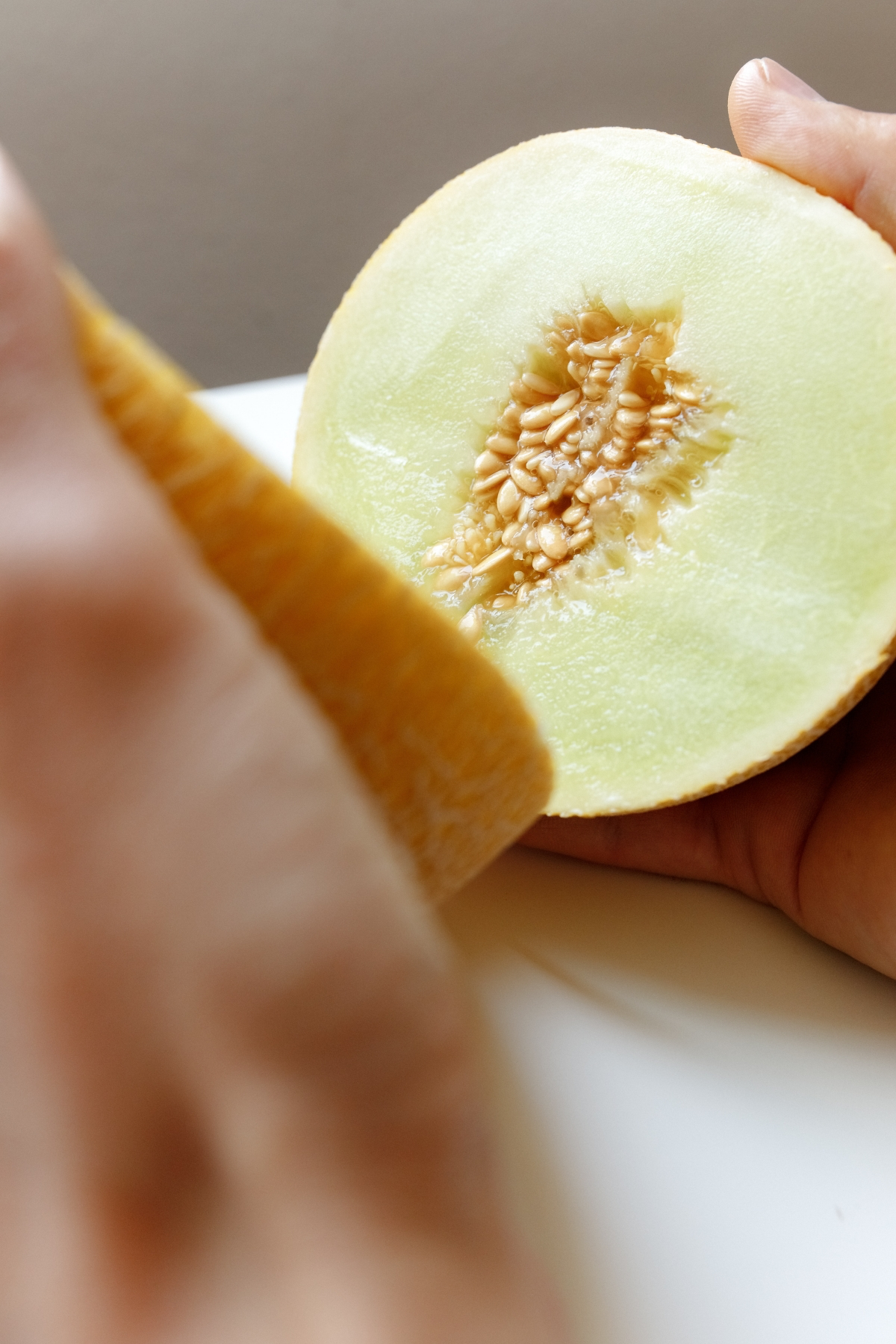
Lesser-known trick: Use an ice cream scoop to remove the seeds and pulp from a cantaloupe half. It gets everything out in one or two clean scrapes!
Bonus Tips: Get Creative and Reduce Waste
Don’t just toss the leftovers! The white part of a watermelon rind can be pickled for a tangy, crisp relish (seriously, look up a recipe for “watermelon rind pickles”). You can also rinse and roast watermelon or cantaloupe seeds with a little salt for a nutritious, crunchy snack.
Awesome Flavor Pairings You Have to Try
Melon is amazing on its own, but it plays well with others. The sweet and salty combination is a classic for a reason. Try pairing melon with:
- Crumbled feta cheese and fresh mint
- A sprinkle of chili lime salt
- Thinly sliced prosciutto
- A drizzle of balsamic glaze
Budget Pro-Tip
To save some serious cash, always buy whole melons. Those convenient pre-cut cubes in the grocery store cooler can cost three to four times more per pound. It takes five minutes to cut up a melon, and the savings are huge, especially for a family.
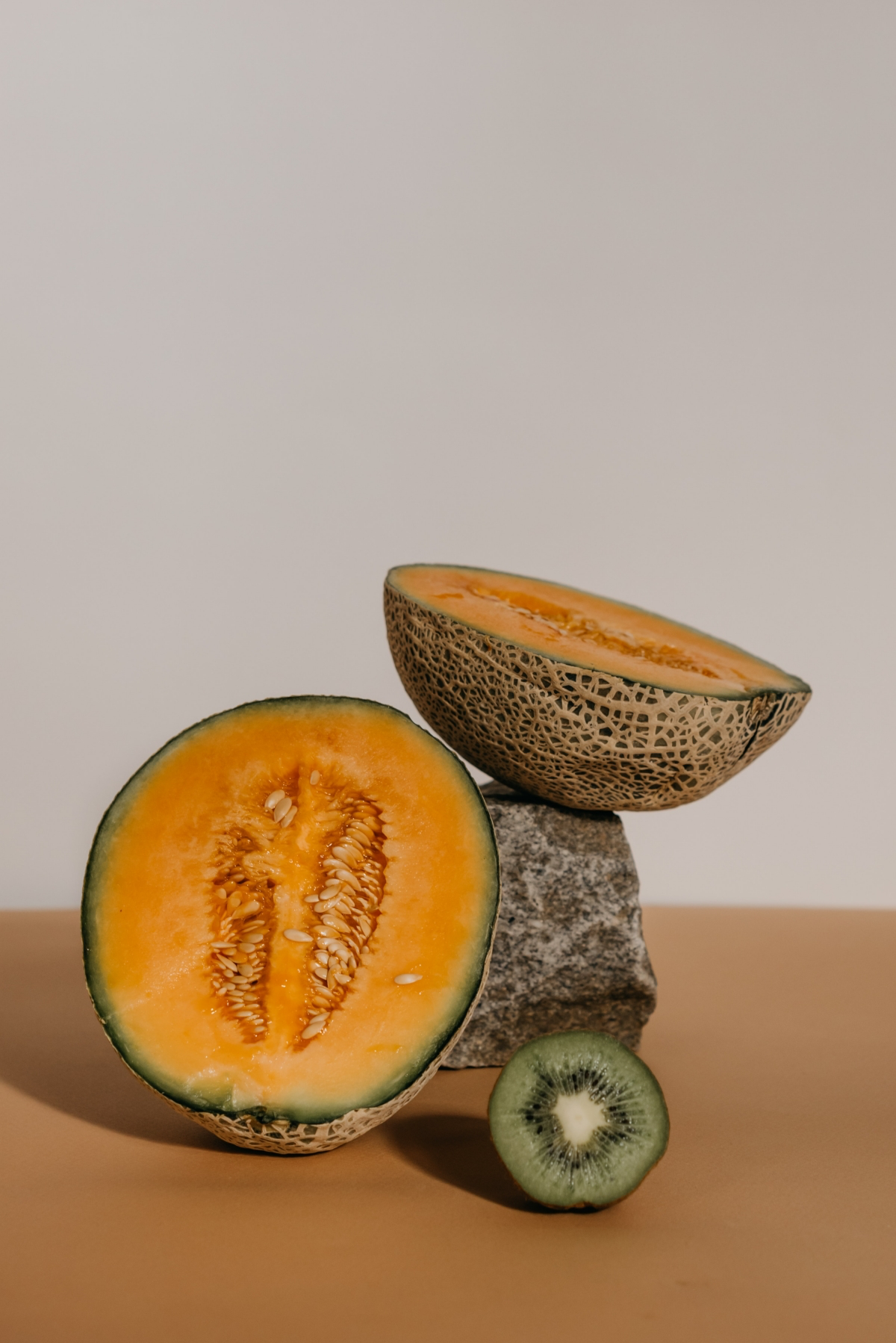
So there you have it. Enjoying a melon is one of life’s simple pleasures, but now you know you’re not just eating a sweet fruit. You’re hydrating your body, supporting your heart, and giving your system a boost of powerful nutrients. And honestly, that makes it taste even better.
Galerie d’inspiration

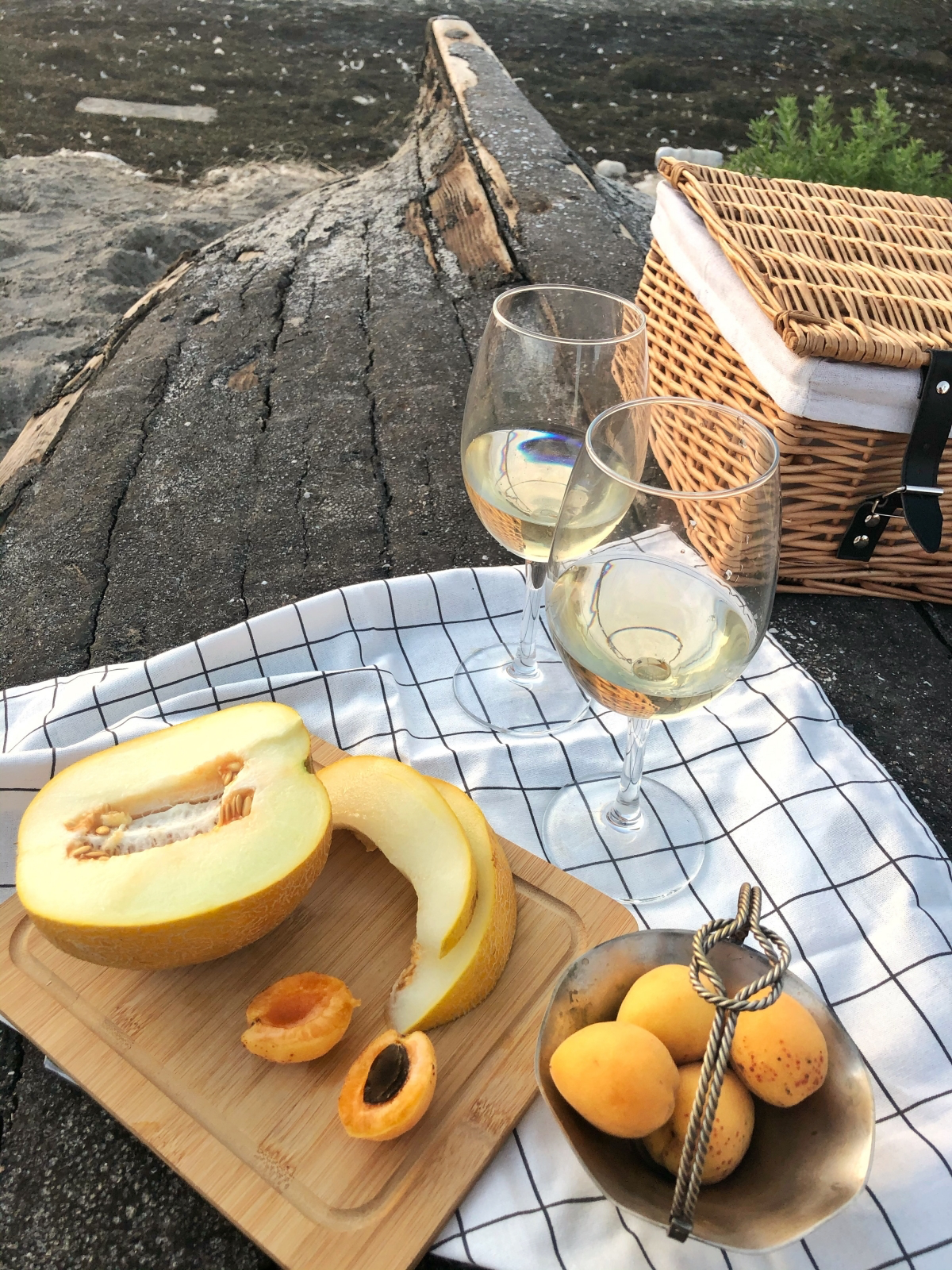
Unlock a melon’s full flavor potential by thinking beyond the fruit bowl. The secret is contrast. The sweetness of melon pairs beautifully with salty, savory, and tangy notes.
- Watermelon: Crumble salty feta cheese and fresh mint over cubes.
- Cantaloupe: Wrap slices in savory prosciutto for a classic Italian antipasto.
- Honeydew: Squeeze fresh lime juice over it to brighten its subtle sweetness.
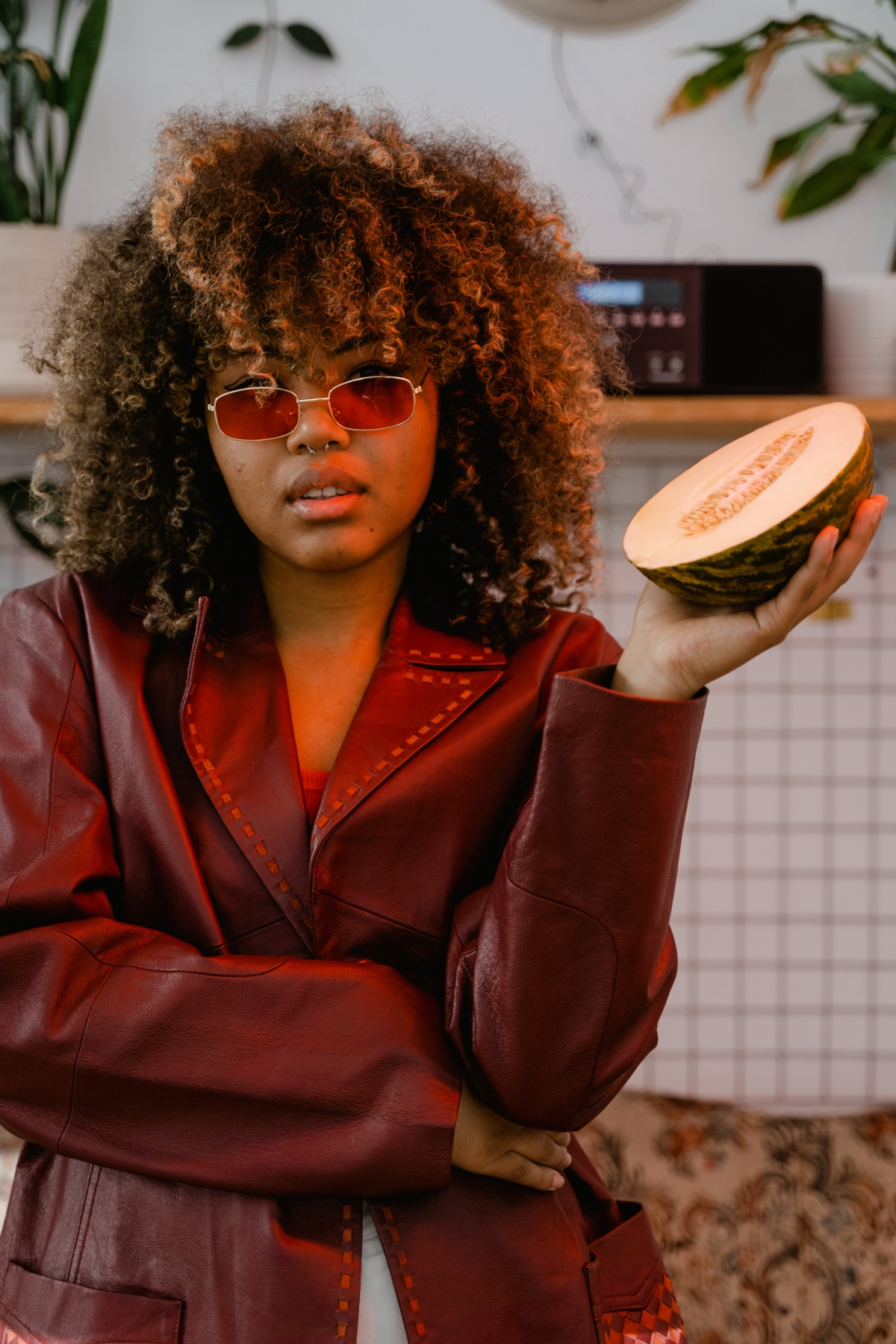
Did you know? The global melon market was valued at over USD 28.5 billion in 2022.
This massive figure reflects not just our love for the fruit, but also the incredible diversity available. Beyond the big three (watermelon, cantaloupe, honeydew), specialty varieties like the crisp Hami from China or the fragrant Charentais from France are gaining popularity in gourmet markets and restaurants worldwide, driving innovation and introducing new flavors to our palates.
Is my melon ready to eat?
For muskmelons like cantaloupe, trust your nose and your hands. It should have a sweet, floral aroma at the stem end (where it was detached from the vine). Gently press that spot; it should have a slight give. A rock-hard stem end means it was picked too early and won’t ripen further, while a soft, mushy spot means it’s overripe.










